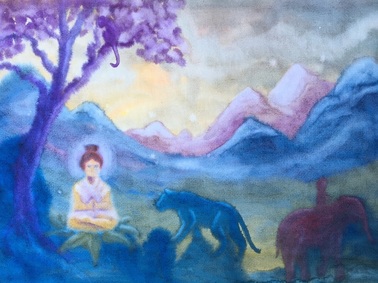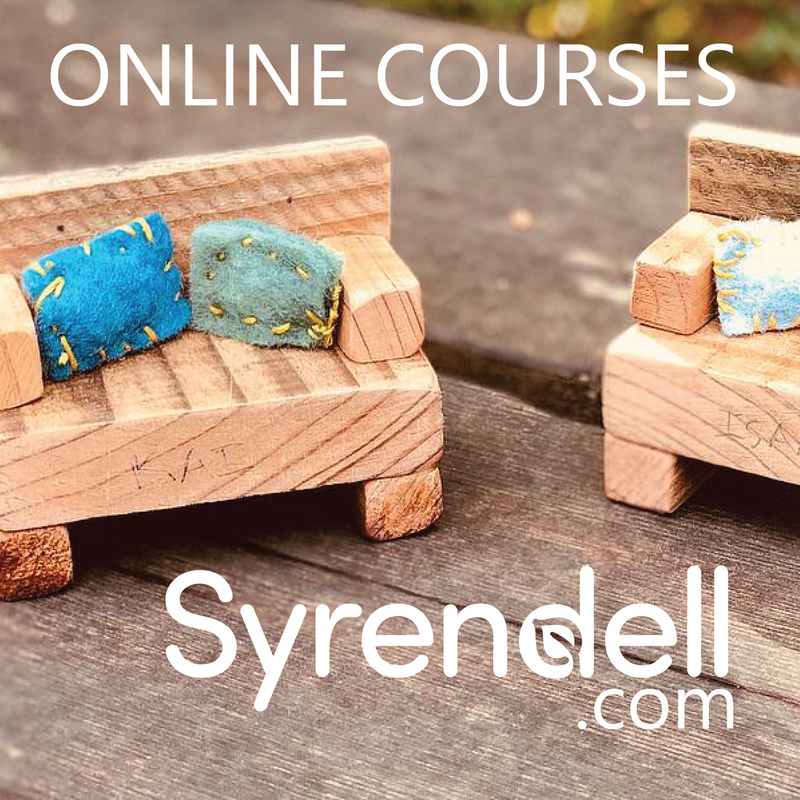|
Being one with the universe sounds very esoteric - almost fictional where only Jedi Masters and Sith Lords possess the power! For most of us, the concept of oneness with the universe is regarded as supernatural, steeped in mysticism, relegated to only those who are practitioners of meditation and the martial arts, and bestowed only upon spiritual initiates. While we strive for enlightenment, or at least, wellness in daily living, we further dismiss oneness with the cosmos as impractical and without any real world application. It's time to shift our mindset of this concept. Being one with the universe is neither esoteric nor useless, rather, it is physiologic and practical. This blog post won't teach you to use the Force, but it may have you rethink your own ability to achieve personal well-being brought through the simple truth of you and the universe being in dynamic equilibrium. Let's look at the physiology of the human cell. The most updated count by scientists of the number of cells in an average adult is 37.2 trillion. Your hair, skin, bones, blood, and organs are all made up of cells. In general, each cell of the human body is a functional and anatomic entity that serves the overall health of the human organism. Cells have specialized tasks that contribute to the collaborative efforts of the entire body. The cells are in constant communication with every material and element within the body. Nutrients and oxygen, genetic material and chemical compounds all move about and around through the cells in a perfectly orchestrated symphony. Maintaining balance through all the systems of the body is a key driver of physiological health. This balance - the optimization of functions - in the body is called homeostasis. We often refer to it as a sense of well-being. Now let's look at the physiology of the human body. There are currently about 7 billion humans around the world. Our bodies are not closed systems. The skin cells serve us not so much as a barrier, but actually more of an interface with the world and with each other. We are walking sense organs. We respond to external stimuli. We respond to intake of external elements. We function optimally when our responses to the external world are in sync with the internal world of our own bodies. In essence, each of us are like human cells. By analogy, each human being is part of the larger organism of earth. And expanding the view further out, each planet in the solar system is part of the larger galaxy, which is part of the larger universe, and so on to a vastness that seems so infinite. As earth rotates and revolves, as we celebrate the seasons and birthdays, our humanness - the physiology, anatomy, and sociology of us - responds to time, to the changes in weather and climate, to availability of resources, to our own inventions. An important feature of homeostasis is that life changes over time, it evolves, it moves as the world moves. We live by the rhythms of something larger than the confines of our own bodies. This is the essence of dynamic equilibrium. Oneness with the universe does not seem so far-fetched. A single human cell is connected to the farthest reaches of space! You don't need supernatural meditative power. By virtue of being human, you were born with the inherent gift of oneness. Acknowledging that each of us is part of a living, breathing, giant super-organism in dynamic equilibrium, we can recalibrate our thinking processes about personal and interpersonal wellness. Here are some examples of situations NOT in dynamic equilibrium, and you can discover for yourself how poor health, illness, and dysfunction can arise from it. In the winter season, when the days are short and the sun sets early and it's cold and damp, we are busy driving about, shopping frantically for the holidays, attending big events and eating too richly. In the work week, when there are insurmountable demands from a job that usurp our time and energy, we carry over that level of pressure on ourselves into the home life and into our interactions with our family. In the setting of businesses and organizations, when developing missions, goals, and objectives, we can regard ourselves as closed systems, operating without the pulse of cultural and contemporary communities. And in our own creative pursuits, when we endeavor to stretch our talents and imaginations, we instead tune in to voices of naysayers and give in to negative opinion. So you can see the unwellness that can come from these situations. Vulnerable immune systems and illness. Feelings of being overwhelmed, irritable, and inadequate. Unclear identity, staleness, and disconnectedness with the larger community. A halt in imagination and inspiration. This negativity comes from not being attuned to the universe. Dynamic equilibrium is maintaining balance and harmony in an ever-changing world. It requires being in sync with the rhythms of the day and the seasons. It requires empathy and compassion. We need to use our intuition. We need to be proactive. We need to listen carefully to the whispering of our own bodies and the world around us. In the winter season, slow down and rest. Be at peace. In the busy work week, lean on your family for support. Their love rejuvenates. Be nurtured. In the setting of business and organizations, open the dialog with the larger community and the impulses of the current time. Be innovative. In your pursuit of creativity, dismiss judgmental opinion and make a leap of faith. Be courageous. Like the human cell among tens of trillions of cells in perfect homeostasis, each of us can be in harmonious balance with the seven billion people on earth and with the infinite stars of the heavens. Dynamic equilibrium is not difficult to apply in practice; it is really less of a tool or skill, and more of an automatic mechanism on which our well-being depends. We become part of the natural ebb and flow of life. A giving and receiving happens, nourishing and nurturing all living things. There is no need for supernatural powers, mystic intervention, or Jedi training. It simply is being awake to our oneness with the universe. Comments are closed.
|
Archives
June 2023
|



 RSS Feed
RSS Feed
